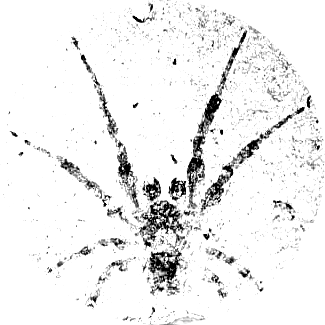Source code for tethne.networks.topics
"""
Build networks from topics in a topic model.
The current implementation assumes that you are using a :class:`.LDAModel`\.
"""
import logging
logging.basicConfig(filename=None, format='%(asctime)-6s: %(name)s - %(levelname)s - %(module)s - %(funcName)s - %(lineno)d - %(message)s')
logger = logging.getLogger(__name__)
logger.setLevel('INFO')
import networkx
from math import log
import sys
if sys.version_info[0] > 2:
xrange = range
from tethne.analyze import features
from tethne.networks.base import cooccurrence, coupling
from tethne.utilities import argsort
[docs]def terms(model, threshold=0.01, **kwargs):
"""
Two terms are coupled if the posterior probability for both terms is
greather than ``threshold`` for the same topic.
Parameters
----------
model : :class:`.LDAModel`
threshold : float
Default: 0.01
kwargs : kwargs
Passed on to :func:`.cooccurrence`\.
Returns
-------
:ref:`networkx.Graph <networkx:graph>`
"""
select = lambda f, v, c, dc: v > threshold
graph = cooccurrence(model.phi, filter=select, **kwargs)
# Only include labels for terms that are actually in the graph.
label_map = {k: v for k, v in model.vocabulary.items()
if k in graph.nodes()}
graph.name = ''
return networkx.relabel_nodes(graph, label_map)
[docs]def topic_coupling(model, threshold=None, **kwargs):
"""
Two papers are coupled if they both contain a shared topic above a
``threshold``.
Parameters
----------
model : :class:`.LDAModel`
threshold : float
Default: ``3./model.Z``
kwargs : kwargs
Passed on to :func:`.coupling`\.
Returns
-------
:ref:`networkx.Graph <networkx:graph>`
"""
if not threshold:
threshold = 3./model.Z
select = lambda f, v, c, dc: v > threshold
graph = coupling(model.corpus, 'topics', filter=select, **kwargs)
graph.name = ''
return graph
[docs]def cotopics(model, threshold=None, **kwargs):
"""
Two topics are coupled if they occur (above some ``threshold``) in the same
document (s).
Parameters
----------
model : :class:`.LDAModel`
threshold : float
Default: ``2./model.Z``
kwargs : kwargs
Passed on to :func:`.cooccurrence`\.
Returns
-------
:ref:`networkx.Graph <networkx:graph>`
"""
if not threshold:
threshold = 2./model.Z
select = lambda f, v, c, dc: v > threshold
return cooccurrence(model.corpus, 'topics', filter=select, **kwargs)
[docs]def distance(model, method='cosine', percentile=90, bidirectional=False,
normalize=True, smooth=False, transform='log', **kwargs):
"""
Generate a network of :class:`.Paper`\s based on a distance metric from
`scipy.spatial.distance
<http://docs.scipy.org/doc/scipy/reference/spatial.distance.html>`_
using :ref:`sparse-feature-vector`\s over the dimensions in ``model``.
The only two methods that will not work in this context are ``hamming`` and
``jaccard``.
Distances are inverted to a similarity metric, which is log-transformed by
default (see ``transform`` parameter, below). Edges are included if they are
at or above the ``percentile``th percentile.
Parameters
----------
model : :class:`.LDAModel` or :class:`.DTMModel`
:func:`.distance` uses ``model.item`` and ``model.metadata``.
method : str
Name of a distance method from `scipy.spatial.distance
<http://docs.scipy.org/doc/scipy/reference/spatial.distance.html>`_.
See :func:`.analyze.features.distance` for a list of distance
statistics. ``hamming`` or ``jaccard`` will raise a RuntimeError.
:func:`.analyze.features.kl_divergence` is also available as
'kl_divergence'.
percentile : int
(default: 90) Edges are included if they are at or above the
``percentile`` for all distances in the ``model``.
bidirectional : bool
(default: False) If True, ``method`` is calculated twice for each pair
of :class:`.Paper`\s ( ``(i,j)`` and ``(j,i)`` ), and the mean is used.
normalize : bool
(default: True) If True, vectors over topics are normalized so that they
sum to 1.0 for each :class:`.Paper`.
smooth : bool
(default: False) If True, vectors over topics are smoothed according to
`Bigi 2003
<http://lvk.cs.msu.su/~bruzz/articles/classification/Using%20Kullback-Leibler%20Distance%20for%20Text%20Categorization.pdf>`_.
This may be useful if vectors over topics are very sparse.
transform : str
(default: 'log') Transformation to apply to similarity values before
building the graph. So far only 'log' and None are supported.
Returns
-------
:ref:`networkx.Graph <networkx:graph>`
Similarity values are included as edge weights. Node attributes are set
using the fields in ``model.metadata``. See
:meth:`networkx.Graph.__init__`
Examples
--------
.. code-block:: python
>>> from tethne.networks import topics
>>> thegraph = topics.distance(myLDAModel, 'cosine')
>>> import tethne.writers as wr
>>> wr.to_graphml(thegraph, '~./thegraph.graphml')
.. figure:: _static/images/lda_cosine_network.png
:width: 80%
Edge weight and opacity indicate similarity. Node color indicates the
journal in which each :class:`.Paper` was published. In this graph,
papers published in the same journal tend to cluster together.
"""
if method in ['hamming','jaccard']:
raise RuntimeError(
'There is no sensicle interpretation of {0} for these data.'
.format(method))
thegraph = networkx.Graph()
edges = {}
for i in xrange(model.M):
for j in xrange(i+1, model.M):
if method == 'kl_divergence': # Not a SciPy method.
dist = features.kl_divergence( model.item(i), model.item(j) )
dist_ = features.kl_divergence( model.item(j), model.item(i) )
dist = (dist + dist_)/2.
else:
dist = features.distance( model.item(i), model.item(j), method,
normalize=normalize, smooth=smooth )
if bidirectional:
dist_ = features.distance(
model.item(j), model.item(i), method,
normalize=normalize, smooth=smooth )
dist = (dist + dist_)/2.
sim = 1./dist
if transform == 'log':
sim = log(sim)
edges[(i,j)] = sim
# pct = numpy.percentile(edges.values(), percentile)
pct = int(round(len(edges)*(percentile/100.)))
for i in argsort(edges.values())[::-1][:pct]:
edge, sim = edges.keys()[i], edges.values()[i]
thegraph.add_edge(edge[0], edge[1], weight=float(sim))
for key in model.metadata[0].keys():
values = { k:v[key] for k,v in model.metadata.items()
if k in thegraph.nodes() }
networkx.set_node_attributes(thegraph, key, values)
return thegraph

